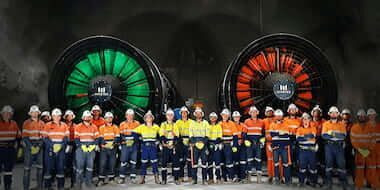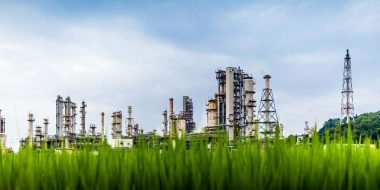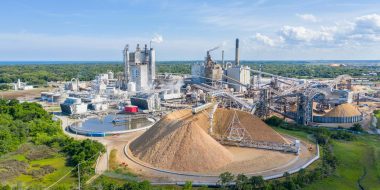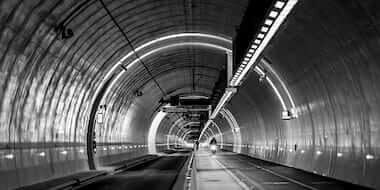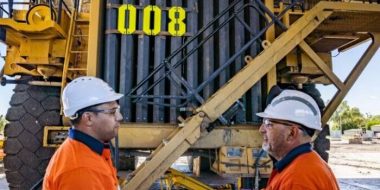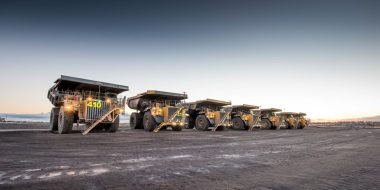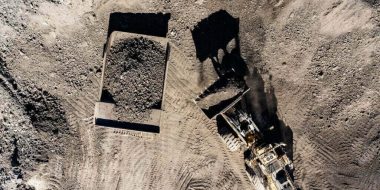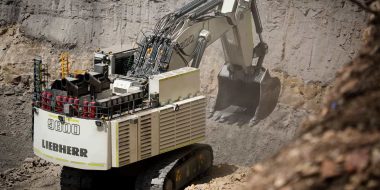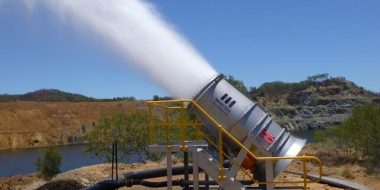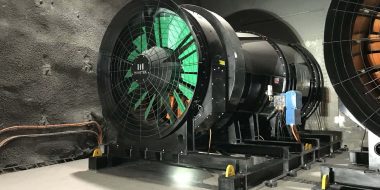The importance of hearing cannot be overstated. Without it, maintaining relationships with loved ones and connections with loved ones would be challenging. More than half of all workers in mining environments are likely to develop some form of hearing loss, according to a recent study. The reason? They’ve frequently been exposed not only to the constant noise/noise pollution but also to high temperatures and strong gusts of air which can lead their ears to pop.
Employees working in environments where hazardous noise levels exist can lead to occupational deafness and occupational hearing loss – one of the most common occupational diseases and a problem that has long fallen on deaf ears.
What are the implications of noise pollution on mine sites?
The implications of noise pollution on mine sites is a serious issue that has been around for quite some time now. From 1976 to 1984, USA’s National Institute For Occupational Safety & Health estimated that 70-90% of miners would develop hearing loss by age 60. Working with heavy machinery and machines while being exposed to high volume levels every day over an extended period of time can cause permanent damage if precautions aren’t taken. Unfortunately, this prediction has come to fruition with one in four mineworkers having hearing issues.

Mining is one of the most dangerous jobs in America, with cave-ins and explosions just some dangers miners face daily. Yet noise from mining has been reported as an under-represented issue that lasts for long periods without interruption – though studies show anything over 85 dB can be harmful depending on factors such as frequency or length of exposure to it. Despite this, it is estimated that 80% of US miners work in an environment where the average noise levels exceed this 85 dB figure and 25% of US workers experience 90+dB levels while working inside mines.
Some studies have shown that continuous exposure to these sounds can lead to an increase in aggressive behaviour, anxiety, and depression. Also, other research has concluded that children whose parents work in noisy environments are more likely to suffer from behavioural problems.
Mining noise sources
Miners often have to work with loud machines that produce a considerable amount of noise. The most common sources of this type of machinery are pneumatic and percussion tools, which can be found operating at dangerous noise levels ranging between 114-120 dB. Other sources of mining noise include ventilation fans, compressors, crushers, and grinding mills.
Major extraction tools like drills or Stageloaders also generate high noise levels, operating at 90 – 110dB and haulage trucks at 90-100 dB, both operating above the 85 dB threshold generally considered safe. The rock or mineral that’s being mined can also be a source of noise, as it needs to be blasted in order to be extracted. The explosion itself can go off at 160 dB, while the noise from continuous mining machines working underground can reach up to 90-95 dB.

How to minimise noise pollution exposure
There are many ways to reduce the exposure of workers to noise on mine sites, but it starts with awareness. Employers need to be aware of the risks that come with continuous exposure to high noise levels and take measures to protect their employees.
One way to do this is by using engineering noise controls, which aim to eliminate or minimize the noise at its source. This can be done by using quieter machines or by enclosing noisy equipment in sound-proof booths. Another way to protect workers is by using administrative controls, which involve changes to working schedules or procedures in order to limit exposure to hazardous noise levels. Personal protective equipment (PPE) is also an important way to reduce exposure to noise. PPE can include earplugs or earmuffs, which can protect workers from noise levels up to 115 dB.
Although there are many ways to reduce exposure to noise on mine sites, the most effective way to protect workers is by using a combination of these methods. Mining companies should implement as many of these noise control methods as possible in order to create a safe and healthy work environment for their employees.
Sound attenuation packages
Minetek enable OEMs such as Liebherr, Komatsu, Caterpillar, and Hitachi to have the world’s quietest mining machinery. We’ve been helping manufacturers, mine sites and contractors reduce their noise footprint for over 60 years. Our sound assessing, consulting, and custom engineering services are all designed to work with you onsite so we can offer effective solutions that meet your needs.
Our solutions provide clear benefits beyond sound reduction, including prevention of overheating through engineered designs, ease of maintenance, less downtime, compliance with strict government regulators, reduction of fines, and improved community relations. We reduce noise by intelligently treating the noise sources most effectively by treating noise from the source, saving operators considerable amounts of money in the process.

If you’d like to learn more about our sound attenuation packages and how they can benefit your company, please contact us today. We’ll be happy to answer any of your questions and help you find the best solution for your needs.
Noise pollution is a serious problem in the mining industry. Ensure the safety of your workers, make Minetek part of your sound reduction strategy and set your site up for success. Leave your contact details below to learn more about our sound attenuation packages.

